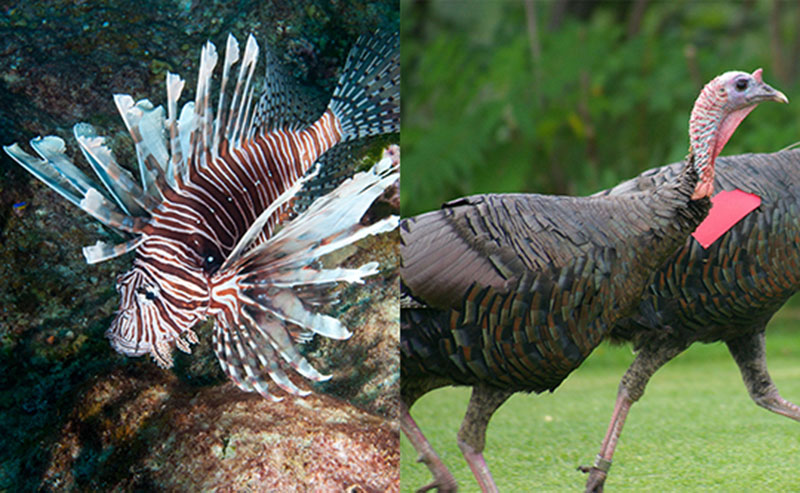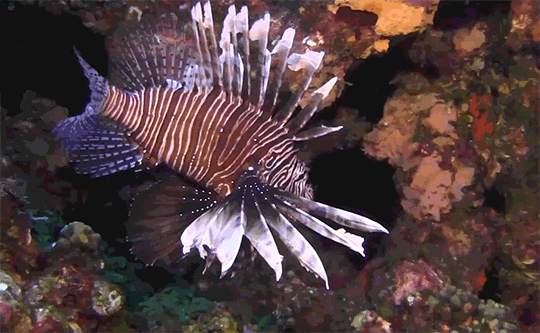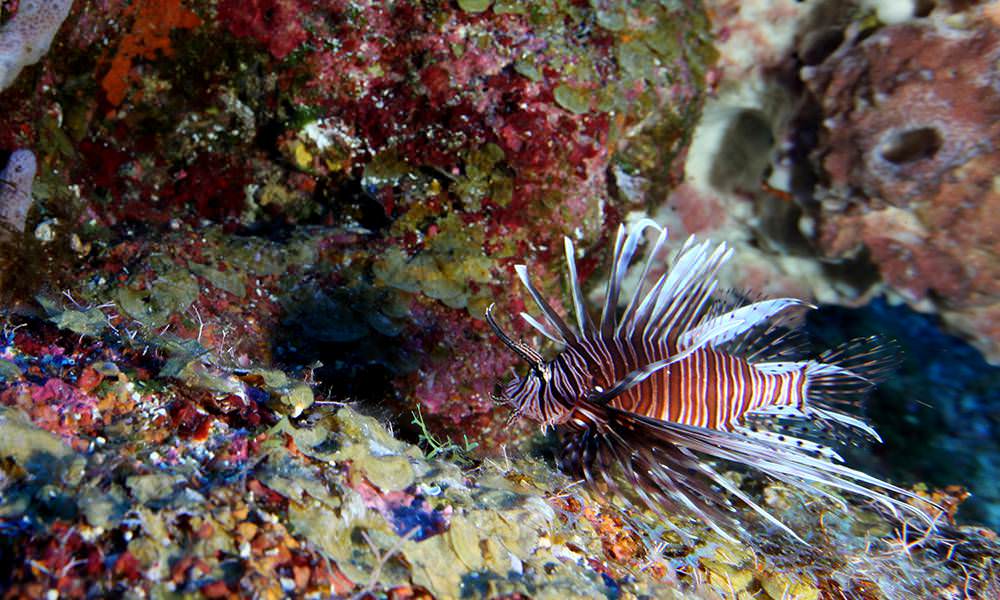What ornate reef dweller is sometimes known as the turkeyfish?

The lionfish! When viewed from the right angle, these fishes’ ornate fins look like turkey plumage. But don’t get too close: these fins are made of venomous spines.

Lionfish are native to the Indo-Pacific, but in recent years they have invaded the waters of the southeast coast of the U.S., the Caribbean, and parts of the Gulf of Mexico, including Flower Garden Banks, Florida Keys and Gray’s Reef national marine sanctuaries -- and they’re causing serious problems.
Here’s the issue: for lionfish, every day is Thanksgiving. A lionfish will eat almost anything that will fit in its mouth, including small fish, invertebrates and the young of larger fish. With their voracious appetites, lionfish can consume up to 90% of the juvenile and small fish on a coral reef, leaving those typically-vibrant habitats in deep trouble.

Researchers at national marine sanctuaries are working to remove these invasive fish. And they have to move fast, because lionfish populations increase very quickly, and they have no known natural predators in the Atlantic Ocean -- though it’s possible that large fish may be developing an appetite for them.
There is one upside, though: lionfish happen to be quite tasty! Once stripped of its venomous spines, cleaned, and filleted like any other fish, the lionfish (or should we say turkeyfish) becomes delectable seafood fare -- perhaps a welcome guest at this year’s Thanksgiving dinner.

